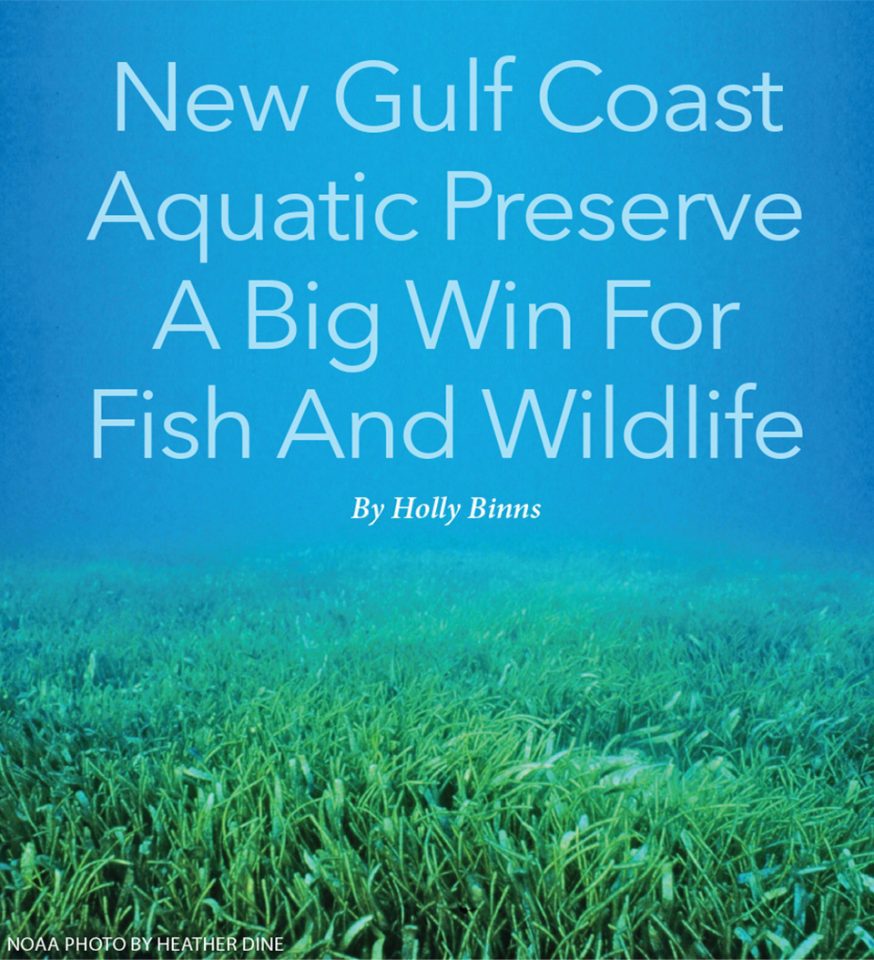The St. Martins Marsh Aquatic Preserve in Crystal River, Fla., safeguards water quality and coastal habitat vital to wildlife and local communities. A new Nature Coast Aquatic Preserve extends these protections to about 400,000 acres of seagrass meadows off Citrus, Hernando and Pasco counties.
Off Florida’s west coast, seagrass beds stretch for miles and for decades have supported a significant part of the regional economy. The Nature Coast Aquatic Preserve is the first new preserve to be designated in more than 30 years and the 42nd in a state system designed to maintain water quality and biological value to ensure healthy ecosystems. The preserve, which covers part of the Gulf of Mexico’s largest seagrass bed, allows traditional activities such as boating, fishing and scalloping.
“The Nature Coast Aquatic Preserve is an essential tool in keeping our marine environment healthy,” said Mike Desabrais, vice president of Port Hudson Fishing Club in Pasco County. “Lawmakers and the governor have significantly helped that environment, and future generations will see great value in their efforts.”
Florida Representative Ralph Massullo (R-Lecanto) and Senator Ben Albritton (R-Wauchula) sponsored companion bills—H.B. 1061 and S.B. 1042—to create the preserve. Their proposal received widespread support.
Supporters agreed that the preserve would be especially helpful in safeguarding the tri-county area’s water quality. Clean water is essential to seagrass, which grows underwater and provides food, shelter and nursery areas for a vast array of marine animals. That ecosystem supports a variety of activities, from summertime scalloping, world-class sport fishing, and internationally renowned manatee-watching to harvesting stone crabs and shrimp. Seagrass-related activities in the region generate more than $600 million annually for the economy, provide more than 10,000 jobs, and support about 500 businesses.
The new preserve will border several existing ones in Pinellas County, St. Martins Marsh, and the Big Bend, creating a large contiguous protected area for valuable marine coastline.
The need for water quality protections in Florida is growing more urgent in the face of increasing pollution threats. In recent years, red tides and other harmful algae blooms on both coasts fueled by nutrient-laden runoff have taken a severe toll on fishing and tourism businesses. A new preserve on the state’s west coast adds a layer of protection to help avert such a disaster. The aquatic preserve will also be designated as an Outstanding Florida Water, which is the state’s highest level of water quality protection and is assigned to areas worthy of special safeguards.
Holly Binns directs The Pew Charitable Trusts’ conserving marine life program in the Gulf of Mexico and U.S. Caribbean.
